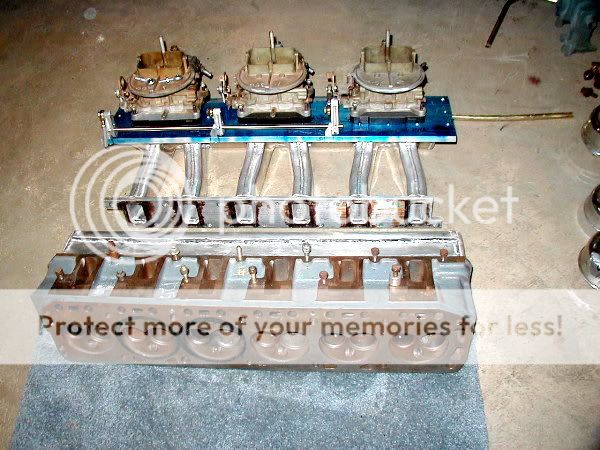chessterd5":4l021mot said:
hello, what about a 4.46 bore spacing? is that close enough?
See
http://www.fordracingparts.com/download/charts/217.pdf for some USA market 1963 to 2005 bore spacings, with massive errors for the 250 deck height.
It has the BUSCH 4.5 V6 4.469" bore spacing engines, based on the 3.8 Essex 90 degree but without the 4.193 spacings. The Essex 90 had a 4.469" left to right cylinder splay distance. The Essex 60 degree V6 2.5 and 3.0 bore spacing, which was what the Vulcan 4.33 bore spacing engine was metricated off. Or the Boss (
nee Huricane) 6.2 V8 with its 4.53" centers. Or the Volvo S80, which has the Yamaha and Duratec 6, and Aston Martin V12 bore spacings. Or the i-5 cylinder Volvo based Focus XR5 and Mondeo engine. Or the BDA variants made for the Ford RS200. Or the Coyote 5.0. But you get the idea...
Yes, 4.46 is okay but not ideal. At the end cylinders, thats pretty much as a big chunk of ledging to cover as you'd like.
Lets do some general knowledge envelope setting. The Ford SOHC Lima head can have a SOHC Volvo or SOHC Pinto head put on it, but the 2.0 Pinto and 2.3 Lima bore pitches are different by 157 thou per bore, the original fully water jacketed B series Volvo and 1969 to 1974 Pinto engines were 102 mm 4.016" bore centers, but the 2.3 required another 157 thou or 4.173" to get enough gasket between the saimesed bores, as Chevy and Jag at the time were suddenly having huge problems with just 0.275"and 0.1875" on its bigger engines, and 0.236" wasn't enough for a vibrating 3.78" bore OHC Ford but 0.393 was. Ford made the changes, but kept most of the Lima engine the same as the early Pinto OHC
That means ledging happens, and any more than 40 thou ledging makes shrouding. On BMC A series 848, 998, 1098 engines, you can fit a later model Sprite/Austin America or 1275 Cooper S cylinder head, but the earlier bores are pitched differently. The bores of the first XKE Jag 4235 cc engine were re-pitched to an even 3.8125" suit the stress of a 3.625" bore engine, the old 1936 Standard Triumph based bore pitch of the old 2.4, 2.8 and 3.442 and 3.781 engines had to be changed to ensure were differently pitched to ensure that an even 0.1875" of metal between cylinders was enough to cover off head gasket failures.
In each case, the heads can swap between the smaller variants, but it isn't optimal, and occurs because the option of loosing 12 to 16% capacity at about 1 hp per cube is just not worth it.
The uniform airflow on these engines, especially the Lima 2300, suffered because the intake manifold is still pitched at the old 1993 cc Pinto engine spacings, and the outer no 1 and no 4 branches are curved more to suit the early Pinto's intake manifold. The 1275 head on a 998 non Cooper engine is vastly different between cylinder, to the point that if a scramble cam is made with different lobe centers, the engine really picks up a huge amount of power. The Jag B head flows well, but not on an early 83 or 87 mm bore 3.4 or 3.8 because of the ledging. Then there was the Datsun L series six cylinder and Valiant slant engines, with different pitches between bores, but the differences were smaller than 50 thou.




